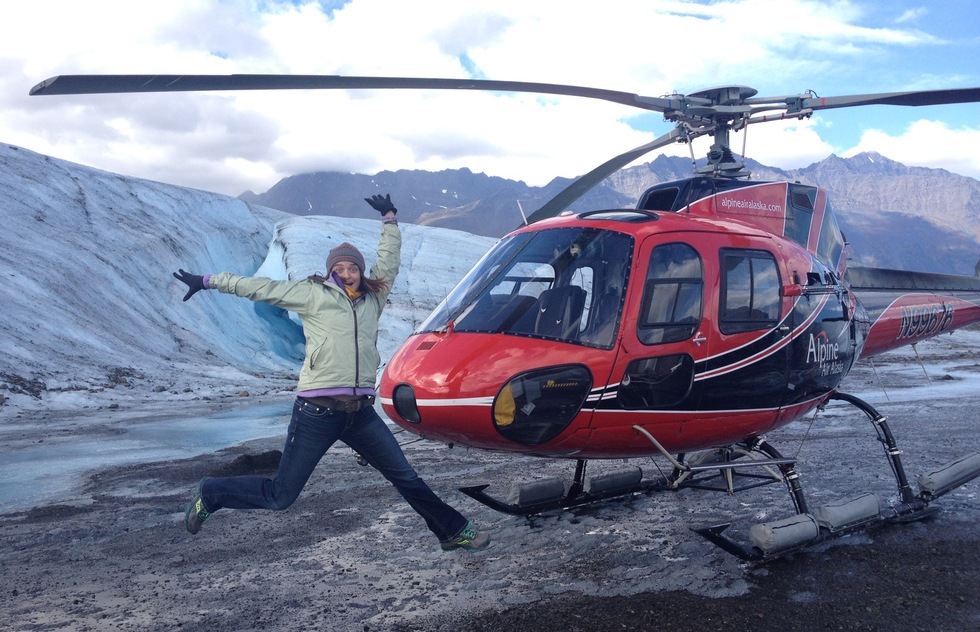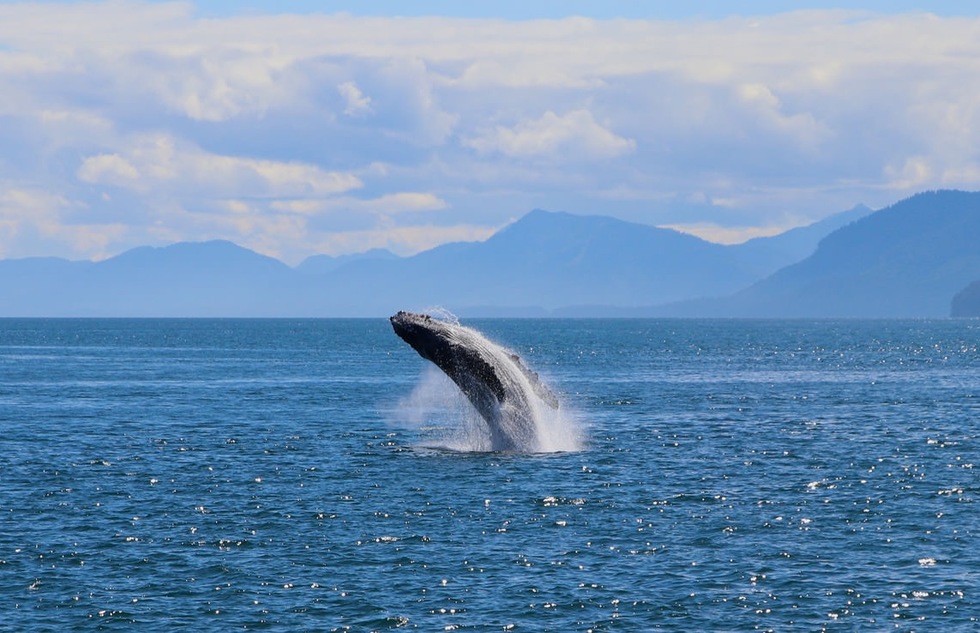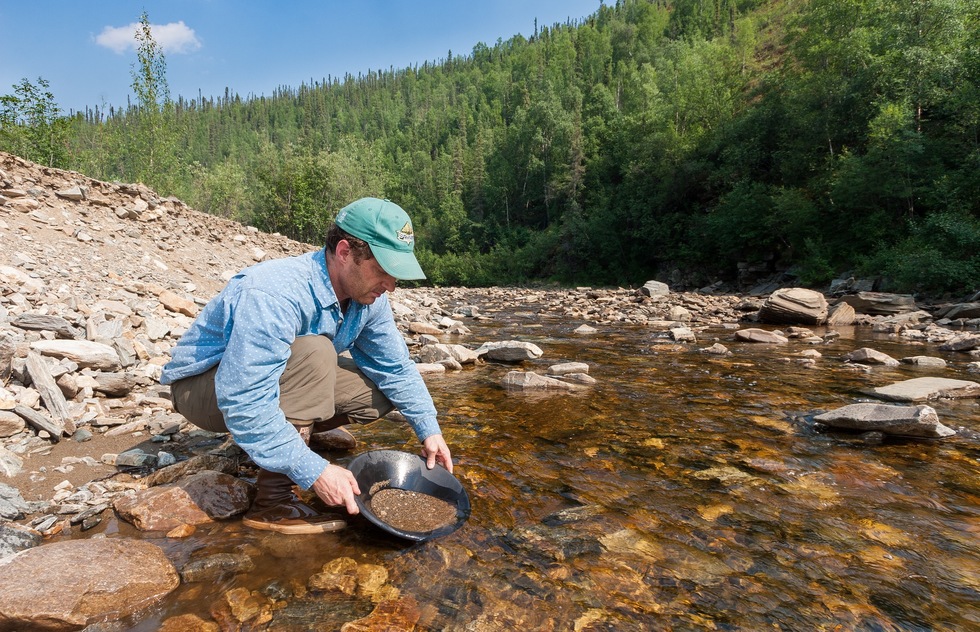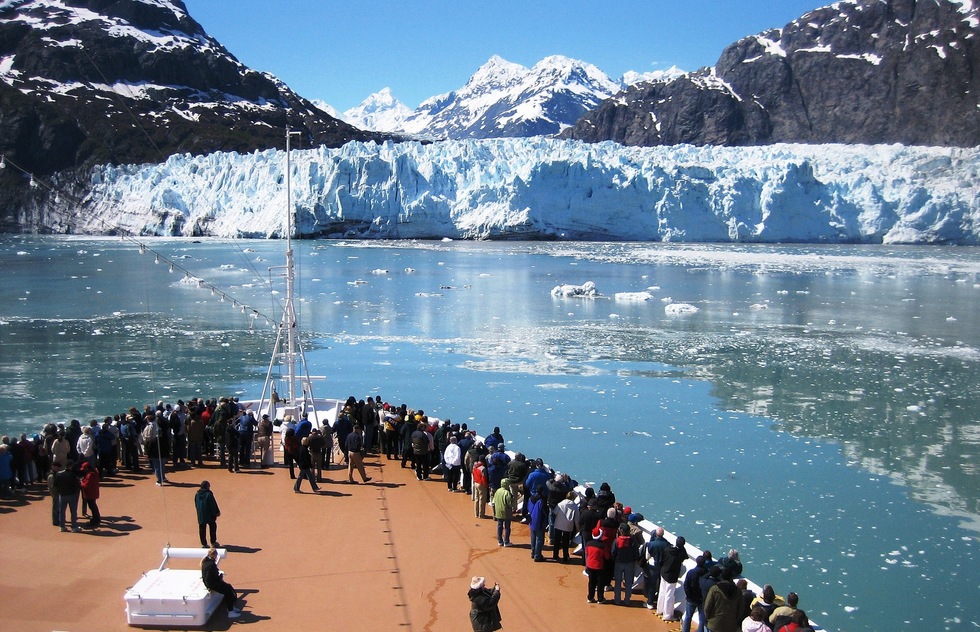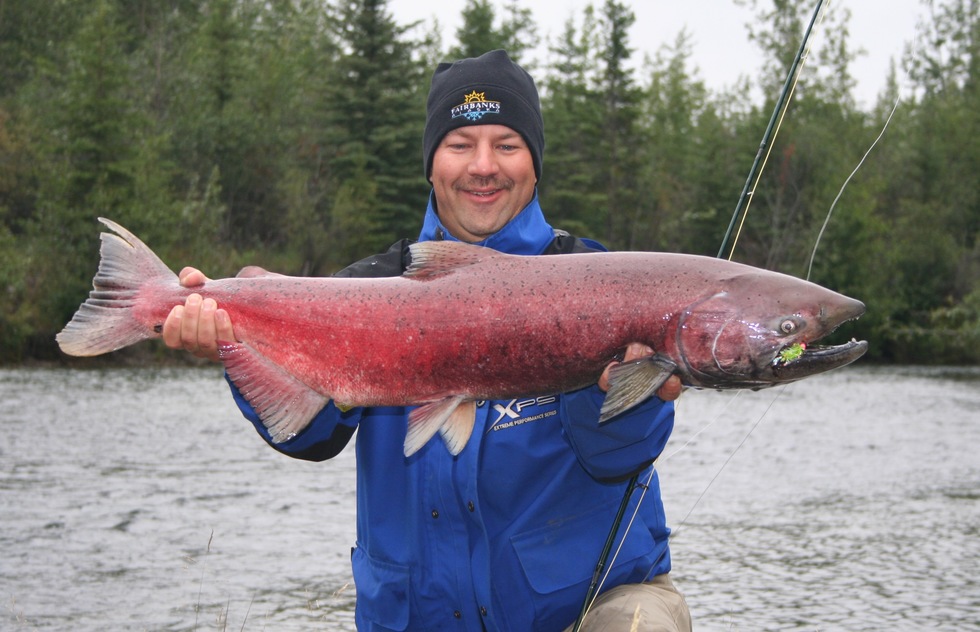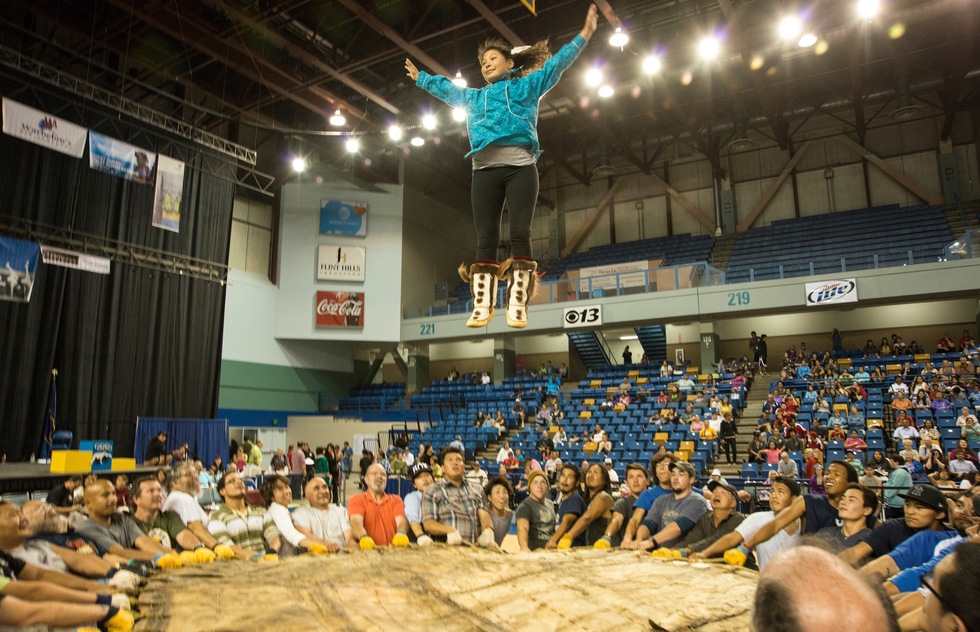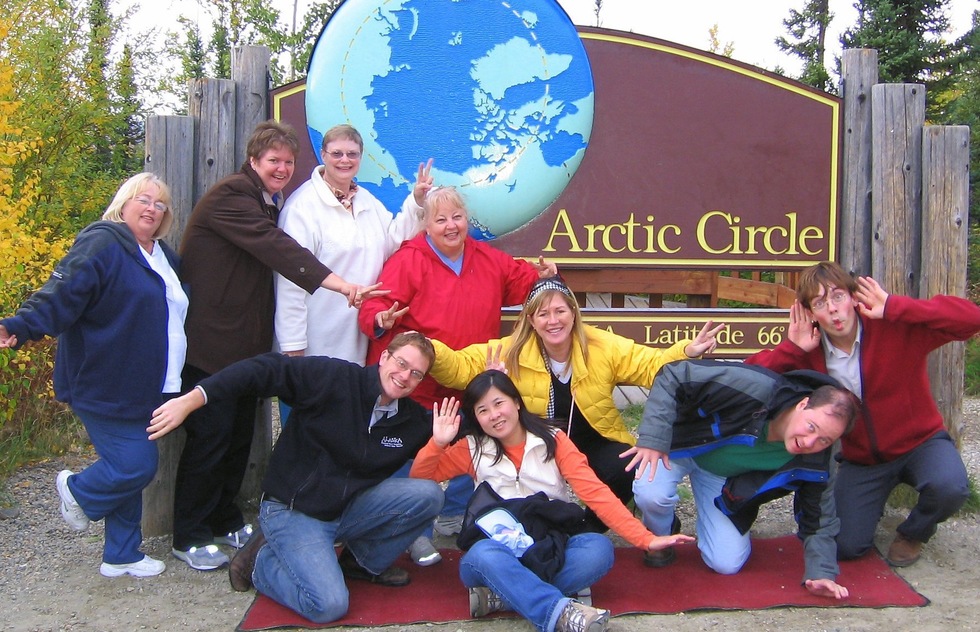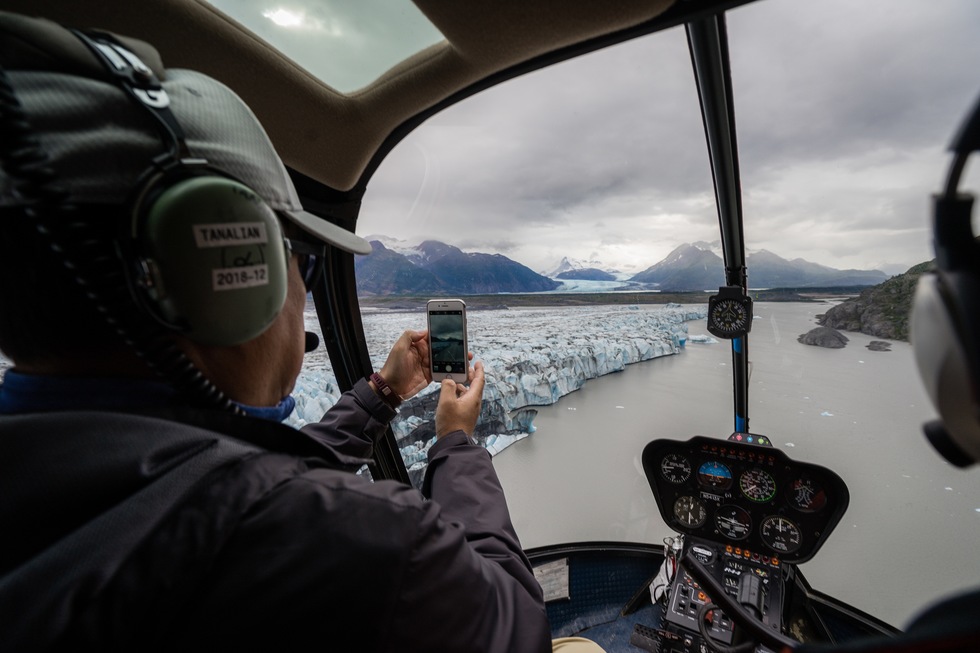Alaska in the Summer: Whale Watching, Glacier Hikes, and the Best Cities to Visit
By Kris CappsVisitors can’t do everything in one trip to Alaska. The state is just too big—nearly two and a half times the size of Texas. But there are still so many not-to-be-missed experiences that are perfect for casual vacationers. Weather won’t always cooperate, not even during the best months to go, July and August, but in Alaska, the adventures go on regardless, so put on your raincoat and get out your camera. Even if you can't do everything, there will always be adventures for the return trip. Start your bucket list now.
(Pictured: Landing on a glacier on a helicopter tour out of Anchorage)
Relax on a guided marine boat tour of Prince William Sound, outside of Whittier (just 48 miles from Anchorage), and you may see a humpback whale breach—an unforgettable spectacle. You’ll also find sea otters, sea birds, and other life that swarms in this pristine wilderness. Other marine tours head into Resurrection Bay and Kenai Fjords National Park, from Seward, a 127-mile scenic drive south from Anchorage. Tours vary in length and vessels vary in size, so it's easy to make it a short day tour or a more involved whale safari. Phillips Cruises and Tours touts a 26-glacier cruise in its five-hour tour. Or you can accompany your trip with a buffet of salmon and prime rib on a smaller vessel with Major Marine Tours.
Maybe you’ll strike it rich. That possibility is what lured fortune-hunting miners north so long ago. Pictured is Jack Wade Creek, a tributary of the Fortymile River on Alaska's eastern border with Canada, the site of Alaska’s first major gold rush in 1886. Now visitors try their hand at gold panning throughout Alaska, both in wild locations and in town at troughs maintained for families and kids. It’s fun to try— the shiny flakes that appear in your gold pan aren't worth much, but they're memorable souvenirs of Alaska history. Gold pans are provided. No need to bring your own.
Africa has its "Big Five" of must-see animals, but Alaska has the Big Four: grizzly bear, moose, caribou, and Dall sheep. (Some people consider a wolf spotting to be a bonus.) You'll have plenty of time to find them when you spend a day driving through Denali National Park. There is only one 92-mile road into the park and the only way you're allowed to use it is if someone else drives you on a park bus—leaving you free to look out the windows without distractions. On a clear day, at the park's Stony Overlook, Denali, the tallest mountain in North America, fills the horizon.
(Pictured: Grizzly spotting at Redoubt Bay Lodge near Anchorage)
This ship, in Glacier Bay National Park, provides a sight that will linger in your memory forever. Rugged rocky peaks are the backdrop for a slow-moving glacier that may even calve while you are watching, making a resonant whoomp as it crashes into the water. Listen for the creaks and groans made by the ice as the glacier crawls forward. A cruise through the fjords is usually filled with sightings of sea otters, harbor seals, bald eagles, mountain goats, and more. A daily tour departs from Glacier Bay Lodge at Bartlett Cove (near Skagway and Juneau), but you'll find similar opportunities, including helicopter tours that land on the ice, from operators in the touristed cities across the state.
Picture yourself in a photo like this, showing off an enormous halibut or a hefty salmon. Alaska has 34,000 miles of coastline and innumerable lakes and rivers, so there is always somewhere to throw out a line. You won’t need experience or equipment; Alaska fishing guides can help make that dream happen. They can also filet, freeze, and ship your catch for you. You may have to share your fishing spot with others, whether it's elbow-to-elbow urban fishing (people literally cast lines in the shadow of the buildings of downtown Anchorage—the water's that clean) or at a remote fly-in lodge. Of course, your competition at a wild site may be bears and eagles, not other humans. To find a licensed operator, visit the official tourism website for the city you'll be visiting and search for a list of recommended sport fishing guides.
In June and July, it never gets dark. At midnight, it can be as bright as it is at noon. Fairbanks celebrates the bright nights of peak summer with the Midnight Sun Festival (pictured), when music, food, and beer take over its downtown streets until the still-sunshiny wee hours. Since 1960, the city's Goldpanners baseball team has played a game on the night of summer solstice—the first pitch is thrown at 10:30 p.m. and no artificial lights are needed. This has been a tradition since 1960.
The blanket toss (pictured) may be a memorable moment at the annual World Eskimo-Indian Olympics in Fairbanks every summer, but Native culture can be experienced fully and in more detail year-round outside Anchorage at the Alaska Native Heritage Center. In downtown Anchorage, there are also the regular family-friendly eductional events at the Anchorage Museum, where Native culture is shared, preserved, experienced and celebrated through stunning exhibits by artisans that combine traditions, history, and ingenuity.
Once you get to Fairbanks, you can go just 115 miles north and claim you’ve been to the Arctic Circle. It’s just an imaginary line on the Dalton Highway at latitude 66.33 degrees north that marks the southernmost reach of the Arctic. During the summer solstice in June, the sun does not set here, nor does not rise above the horizon for the winter solstice in December. As you'd expect, there's a colorful sign perfect for photographs, but there's nothing else to do there. In fact, that entire stretch of the Dalton Highway has virtually no services. It’s just a remote, two-lane gravel road through wild country. That means this Instagram moment will require spare tires, food, water and warm clothes—or visitors can just sign up for a guided tour in Fairbanks.





